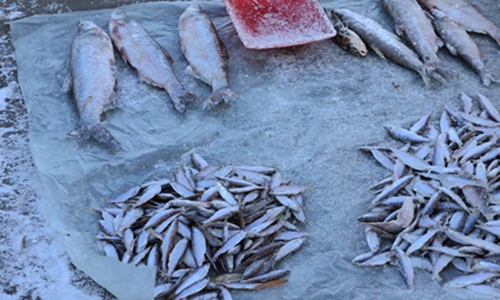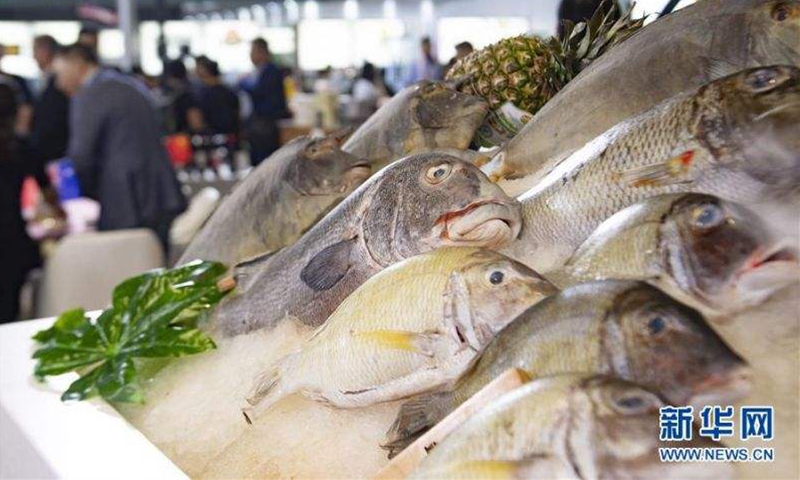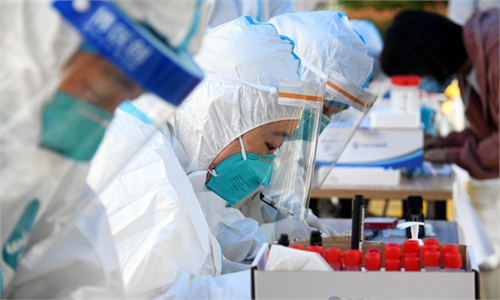Infection through cold-chain industry prompts speculation over sources of Wuhan outbreak
Speculation grows over sources of Wuhan outbreak

Photo: VCG
Suspicions about the real source of COVID-19 are rising in China, with more cases being reported in which the live virus has been found on the packaging of imported frozen food. Such cases are believed to be the primary suspects in infecting cold-chain industry workers in Beijing and Qingdao, East China's Shandong Province, later leading to local outbreaks. It is unclear if this was the case in Wuhan, Central China's Hubei Province, earlier this year.
Chinese inspections have detected COVID-19 on the packaging of frozen food, indicating that live coronavirus can be imported through the cold chain and infect food industry workers in the sector who do not have effective protection, read guidelines on COVID-19 prevention in the production and operation of cold-chain food, issued by the National Health Commission (NHC) on Tuesday.
The newly suspected transmission route of the virus has sparked discussion on the unexplained Wuhan outbreak. Some experts said it is possible that the source of the virus in Wuhan's Huanan seafood market was also linked to the cold-chain industry, although there is not yet any evidence to point to that.
Others said that it was not possible that transmission through imported frozen food could result in such large infection numbers in Wuhan.
If a person in the cold-chain food industry is infected with COVID-19, the virus may contaminate food surfaces and packaging, and even spread further, read the NHC guideline.
The guideline offered advice on COVID-19 prevention regarding the entire the cold-chain industry, including production, loading, transportation, storage and selling. Recommendations for emergency response when suspected cases and positive samples are detected are also involved.
A number of unloading workers involved in the cold-chain food industry have been found to be infected with COVID-19, suggesting that besides general personal hygiene requirements, loading and unloading workers should wear protective garments, use masks and gloves, and even wear goggles.
The deputy mayor of Qingdao said in a press briefing that sufficient evidence has been found to show that coronavirus could stay alive for long periods under freezing conditions and infect people from goods.

Photo: Xinhua
Yang Zhanqiu, deputy director of the pathogen biology department at Wuhan University, told the Global Times that it's possible that imported seafood caused the Wuhan outbreak, assuming that imported seafood products were confirmed to be sold at the Huanan seafood market.
"We have not found an infection chain showing that the virus passed from bats to humans, and more research and investigation work should be done to trace the infection chain involving other animals and aquatic life," said Yang.
In contrast, Jin Dongyan, a biomedical professor at the University of Hong Kong, told the Global Times on Wednesday that the outbreaks linked to the cold-chain industry have not resulted in large-scale outbreaks so far.
The viral load on food packaging was relatively low and would probably not result in infections of large numbers of people, said Jin.
As of September 15, based on statistics from the Chinese Center for Disease Control and Prevention (CDC), 24 provincial-level regions in China had reported 3 million test results of samples from the frozen food industry. Only 22 of the samples from food and its packages were found to have coronavirus, and they all had low viral loads.
"If we assume imported frozen food packages caused the Wuhan outbreak in December 2019, then there has to be evidence of the COVID-19 outbreak in countries or regions where we imported the contaminated food from at that time. The viral sequences of the countries' outbreaks should share many similarities with the sequences in the Wuhan outbreak," Jin said, noting that so far, there's no evidence pointing to that.
Wu Zunyou, the chief epidemiologist at the CDC, told media that early investigation showed COVID-19 cases were mainly found among seafood vendors in the Huanan seafood market.
"We still need scientific research before jumping to conclusions," he told the official newspaper of the Communist Party of China (CPC) Central Commission for Discipline Inspection (CCDI) last week.




